
Subjection to the intention of the thing is widespread…
‘Quatermass II is the second in the original trilogy of Nigel Kneale Quatermass stories. It picks up the story two years after the original. Like it’s predecessor, ‘The Quatermasss Experiment‘, whilst a hugely important cultural artefact in it’s own right, it is also hugely influential, particularly on a number of ‘Doctor Who‘ stories and in some ways, on the whole direction the series took in the late 1960’s. The title ‘Quatermass II’ is not only indicative of the fact that it is a sequel –it is derived from the name of the nuclear-powered rocket that the British Rocket Group (BRG) are testing at the start of the story. This second ‘’Quatermass’ story provides the inspiration for plot elements of ‘The Invasion’ and ‘Spearhead from Space’ and possibly even something like ‘The Green Death’. Any story with a sinister industrial complex, with black dressed militarised guards and friends in high places to protect their secrets, where people are possessed or replaced, well this is really the source text. It retains the body horror and possession aspects of the ‘The Quatermass Experiment’, but adds into the mix a cold war era conspiracy thriller element. The paranoia and menace extending not just to the secretive industrial complex at the heart of this, but to Whitehall and even as far as Quatermass’ own rocket group.
In my review of the Doctor Who story ‘Spearhead from Space’, I mentioned that whole scenes at the start of the story are lifted straight from ‘Quatermass II’, as is the plot strand of ‘meteorites containing an alien consciousness and creating a new form in a tank’. In ‘The Invasion’ – the black clad guards, sinister industrial complex, government conspiracy to cover up their activities and possession of senior government/military figures aspect of the story feels wholly imported from ‘Quatermass II’. As do the repeated UFO scares in both ‘The Invasion’ and ‘Spearhead’. Another ‘Doctor Who’ story – ‘The Invisible Enemy’ even uses test footage for a proposed remake of ‘Quatermass II’ – the scene where the Doctor looks through an inspection window to see the virus growing. That original scene from this story is repeated again and again in ‘Doctor Who’ – Quatermass finally gets to see what is growing in the synthetic food tanks at Winnerden Flats, opens the inspection hatch, looks inside and turns away in revulsion. Think the Wirrn grubs in the solar stacks in ‘Ark in Space’, the Kaled mutant embryo room in ‘Genesis of the Daleks’ and various scenes in the impeller shaft in ‘Fury from the Deep’. Even something like ‘Inferno’ or the space control scenes in ‘Ambassadors of Death’ feel like they belong in the world of Quatermass II. It is hugely influential on Season 7 of ‘Doctor Who‘ as a whole – very much in line with producer Derrick Sherwin’s vision of ‘let’s take it back to Earth and do it like Quatermass’.
Cold war paranoia and post-war housing policy
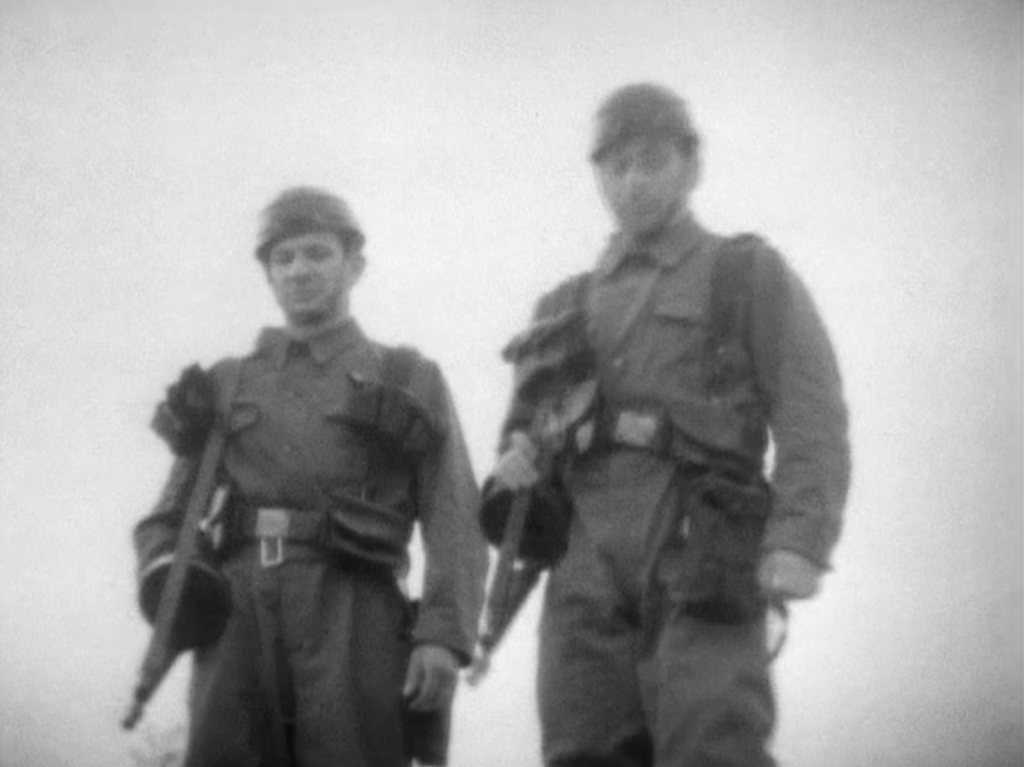
However, I would be doing ‘Quatermass II’ a real injustice just to look at it from the perspective of how it influenced ‘Doctor Who’ – it is a hugely important piece of British cultural life and an important piece of popular British TV history. ‘Quatermass II’ is Kneale’s response to the cold war paranoia sweeping the world of 1955. To the listening stations and missile bases springing up around the country and the burgeoning military/industrial complex. Kneale is instinctively anti-authority, Quatermass bristles with this, being both inside and outside of the establishment. Like the Third Doctor, he both has to cooperate with and use officialdom, whilst also fighting against the constraints and narrow minded attitudes at the same time. It is an an uneasy balancing act. There are times when Kneale’s work feels almost anarchistic, at times deeply conservative, especially as he gets older. This is a piece that has libertarianism at its heart and features an armed workers revolution against ‘the company’, whilst at the same time fighting against a creature that is itself a collective, a group or gestalt, which could be viewed as a signifier of communism. Or alternatively Kneale’s critique of his many travails with and grudges against the BBC and its management, something that troubled him deeply and he wouldn’t let go of his whole life.
The story is told across six half episodes, aired on a Saturday night at 8pm – ‘The Bolts’, ‘The Mark’, ‘The Food’, ‘The Coming’, ‘The Frenzy‘ and ‘The Destroyers‘. The structure of the piece, splits the action between the British Rocket Group, where Quatermass has been studying the test results for his new rocket, the sinister industrial complex and its associated workers community at Winnerden Flats, the committee of enquiry at Whitehall and finally and least successfully an asteroid in Earth orbit.
At the heart of ‘Quatermass II’ though is the small, coastal village of Winnerden Flats in Eastern England, which has been completely bulldozed out of existence. In its place a shining new, massive industrial complex has risen, filmed at the Shell complex at Stanford-le-hope, Essex. Mirroring those ghost villages absorbed into MOD land or flooded for reservoir construction. It is all highly secret, with the well-paid construction workers sworn to silence and images of wartime propaganda – posters like ‘Talk about your job – lose it!’, ‘Remember silence means sealed lips!’. It is also a reflection of what Kneale himself has been doing since we left him in 1953 – adapting ‘1984’ with Rudolph Cartier for a seminal and very controversial 1954 BBC TV production. For Quatermass, the complex even looks very similar to his own abandoned plans for a moonbase. The pressure domes designed to provide a breathable atmosphere for and nourish human life on the moon, repurposed for some other reason.
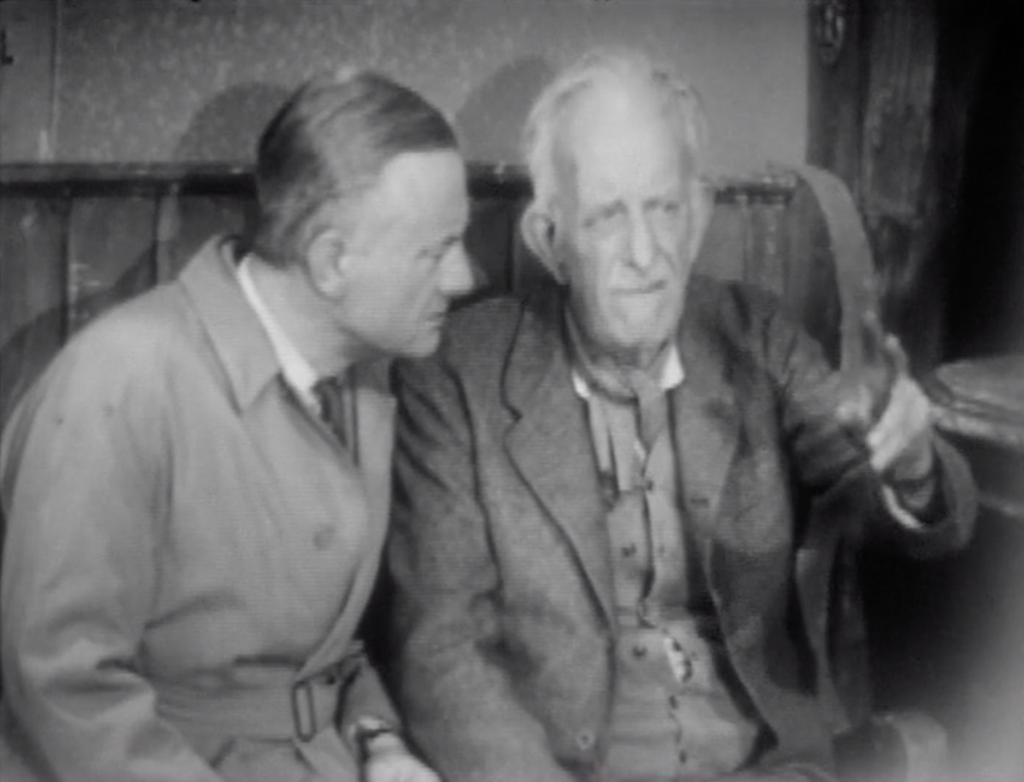
Winnerden Flats is also a reflection of the rise of the New Town in the post-war era and the temporary, hastily erected pre-fabricated housing, built quickly to house a displaced urban population. The mythos of Old Winnerden Flats itself, is like a Betjeman poem or Kinks song – a paean to the lost innocence of the past. In a terrific scene in a pub at a nearby village, an old man recounts to Quatermass what the place was like, almost in a eulogy – ‘I courted a girl from Winnerden flats, I married her..’ lost in a reverie. It is beautiful writing. Kneale expertly entwines the normal and everyday amongst the uncanny, the existential threat to humanity and the jack boots and machine guns of the guards.
We also have the memories of a tramp (played by Wilfred Bramball) who fondly remembers the villagers and their generosity., whilst hiding from the guards in the rubble of its destruction The impact of the Cold War on British life in microcosm – the military and industrial trampling on old England.

Later, a family – Mum and Dad and young son carry on with the pretence of a holiday in the shadow of the plant – ignoring the changes and security notices, in a very British show of the ‘holiday must go on’ despite the pouring rain. Later as Quatermass speeds away from the plant in his car, Cartier pans back to show the remains of the family. A typical piece of Kneale brutality and there is plenty more of that later.

Even the situation we find the BRG in, echoes the Cold War setting. They have just tested the experimental Quatermass II rocket, with a hybrid nuclear engine in the deserts of central Australia. The Woomera test range was used for the real British rockets of the time – Blue Streak and Black Knight. This was very much a time when a British rocket programme and even possible exploration of space, looked far more likely rather than our modern perspective. It was lost not through lack of expertise, rather lack of money in the post-war era. That plot thread will be picked up by Kneale in ‘Quatermass and the Pit’, when the military move to takeover his rocket group, supported by the government. Here we also have a conscious echoing of the British nuclear tests in the Australian desert. The consequences for the test crew here are fatal, wiped out as the nuclear motor goes critical – all captured on remote filming. The consequences in real life for many would be similar, just from cancer over a longer period of time.
Next up. I will look at the nature of the threat, of the conspiracy covering up the existence of the menace and what is contained in the pressure domes.
‘Dillon – there’s something on your face’
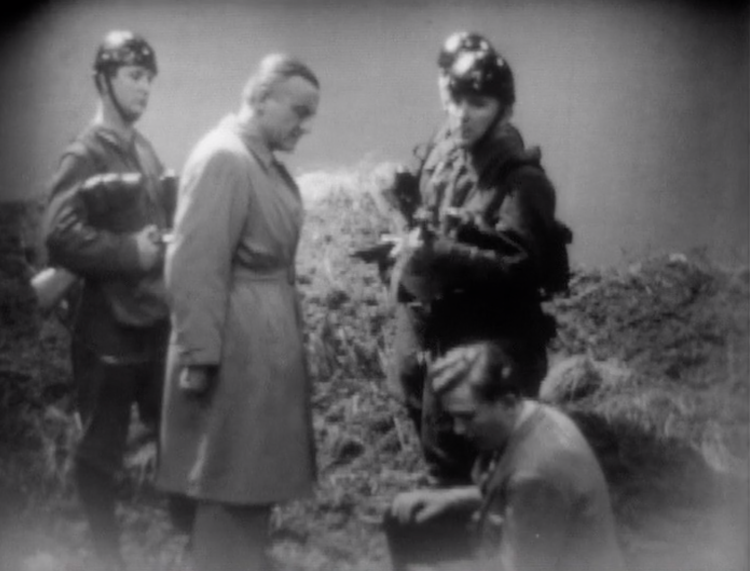
One of the aspects of Kneale’s writing that I love most, is his skilled handling of exposition and the range of methods he employs to control the slow release information across the piece, so that it feels natural and not forced. As with ‘Quatermass Experiment’, he drip feeds everything we need to know across the piece, Initially we have the conversation in the radar tracking station – the nature of the threat and that it has happened before and been covered up. Then the scientific investigation by Quatermass, his daughter and Leo Pugh revealing the shape and nature of the meteorites and eventually where they are coming from. An enquiry into Winnederden Flats by a campaigning MP – Vincent Broadhead, leading the uncovering of plot at the heart of government and that the menace is not just confined to Britain – it is global in nature. And finally a press story (Hugh Conrad, the journalist played by Roger Delgado). It is extremely impressive writing again. The plot is beautifully constructed, at least until the final episode. It is an onion being slowly pealed and revealing the layers of the silent invasion and the conspiracy at the heart of government and the establishment.
We start with the opening scene which I have already referenced – the radar tracking station tracking meteorites landing nearby, a scene which brilliantly highlights the mundanity of army life. This also introduces us to the fact that this has happened before (again used in both ‘Spearhead from Space’ and ‘The Invasion’). Captain Dillon and the Sergeant go off to try to find one nearby and again in scenes echoed in ‘Sprearhead’ find an old farmer’s wife looking for help, something is wrong with her husband – he’s found one of the meteorites and he starts acting uncharacteristically.
‘I’m certain there was something …else. For a moment I saw it clinging to his face. Then it had gone, like a soap bubble bursting It wasn’t unlike a bubble .. and it left a mark’
This all ties back to the British Rocket Group, because Dillon happens to be the boyfriend of Paula, who works there and happens to be Quatermass’s daughter. She is presumably the daughter that is referenced in the final Quatermass instalment, where he is searching for his lost granddaughter. Quatermass agrees to accompany Dillon to the scene of the landing, largely to take his mind off the disaster that has happened during his initial tests of the rocket. The meteorites break open when a victim is nearby, releasing an ammonia gas ‘a smell of old stables’ and a mark on the skin. Dillon is infected, collapses and taken away by the guards at Winnerden Flats – who have been collecting the meteorite ‘overshoots’. The role they play in the plot has similarities to the Autons collecting the Nestene energy spheres in ‘Spearhead’ and the IE guards in ‘The Invasion’. They are blank, emotionless and ruthless – the workers call them ‘zombies’.
Later, Leo Pugh, a scientist and mathematical genius working with Quatermass, reconstructs the fragments of the meteorite which infected Dillon. He discovers it was hollow and designed like projectile to survive entry into the Earth’s atmosphere. Does any of this sound familiar?
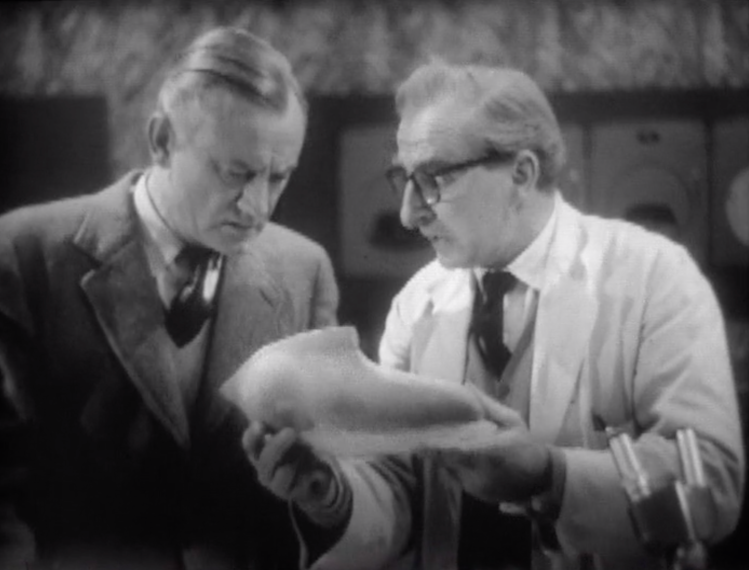
Power to Compel….

’In the past few hours I’ve gone over this again and again. There is only one possible explanation… a multiple organism. A group creature .. a countless host, a thousand billion individuals if you like … with one single consciousness. You see what that means? The experience of any one of them is transmitted to all the rest. Shared by all of them simultaneously… wherever they may be.’
‘There’s this violent shock to the brain. And afterwards – something is left implanted. You might call it a new instinct. A blind compulsion to act only – for them’
In episodes 2 and 3 the story switches to Whitehall. Quatermass has tried contacting Lomax, the police inspector who helped in the first story, to no avail. Instead he tries Fowler, the civil servant he liaises with on his own work. Who puts him in touch with Broadhead’s enquiry. It becomes clear though that many of the committee members have been infected by the same thing as Dillon and the farmer – they all share a similar mark. The conspiracy stretches not just to the British government – the ‘synthetic food’ plant at Winnerden Flats, but also globally with similar plants in Sweden and Brazil.
Escaping, as Broadhead is infected, Quatermass and Fowler meet a PR man, Ward who can get them into the plant. And again, the action switches back to Winnerden Flats. As they investigate the plant, Ward dying covered with the poisonous slime that is being fed into the tanks. More of the menace is revealed as the contents of the substance covering Ward are analyzed back at the BRG – an ammonia-based toxin. Pugh and Paula also work to track down where the meteorites are coming from – an asteroid hidden in Earth orbit. Quatermass returns , to the camp at Winnerden Flats with the journalist Conrad – a nice performance from Roger Delgado in a non-villainous role. While they are questioning the worker’s at the pub, thousands of meteorites start falling. Conrad is amongst those infected – phoning in his story to his sub-editor as the workers listen to the story of what they have actually been building.
At the plant, in a seminal, much copied scene, Quatermass gets a glimpse of the creatures growing in the alien atmosphere created in the pressure domes – the ammonids.
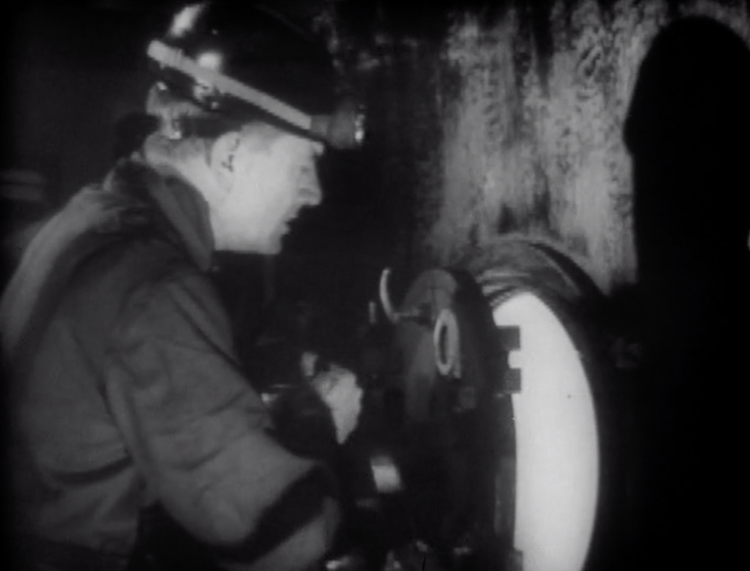
Quatermass steps up to the massive cover. He spins a locking wheel….pulls. The cover creaks open, revealing an armoured glass inspection window. He moves close – and stiffens with horror.
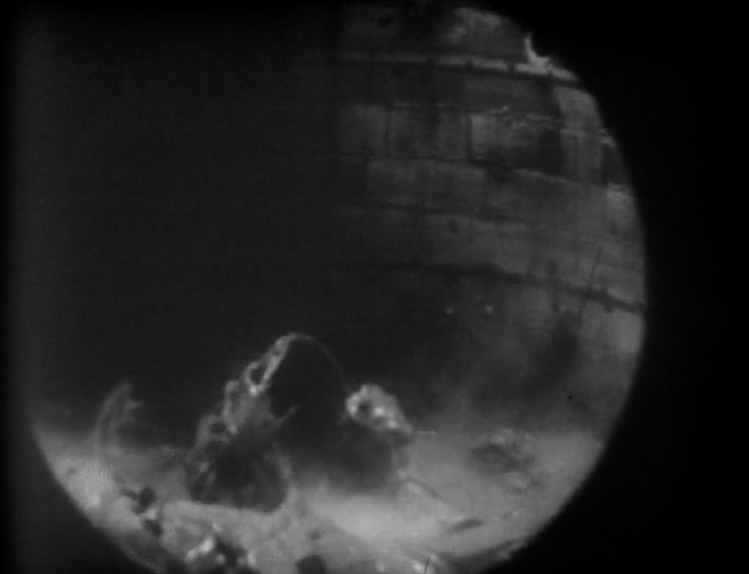
Through the glass can be seen the whole of the interior of the dome. In shimmering light, muddy slime is surging and bubbling, violently agitated. Its surface boils just a few feet below the inspection window … and in it are shapes. Shapes that in the same instant have no shape…. but which to judge by the size of the lamps in the dome and a steel ladder descending into the sludge are colossal.
Something slithers like a mudfish, puffs to a dripping grey protuberance as high as a man – shoots upwards in a series of vast bud-shapes that spring neck from neck, ever wider, towards the very roof of the dome far above. Then it withdraws in an instant.
Wreaths of vapour curl and hang. A bobbing bladder distends itself into a vast glistening cloud., expanding at one point, shrinking at another – twists abruptly into a spiral of thick strands – and foams away under the slime. Shapes – or a single vastly complex shape? A monstrous, swaying column of glistening living matter rises past the inspection window, swoops downwards to link with another group – and plunges, sending the black ooze spattering against the glass.

Fade in end music. Fade to black.
In the final part we will take a look at the revolution at the workers camp and at the final flight of the Quatermass II rocket.
Rudolph Cartier and the workers revolution …
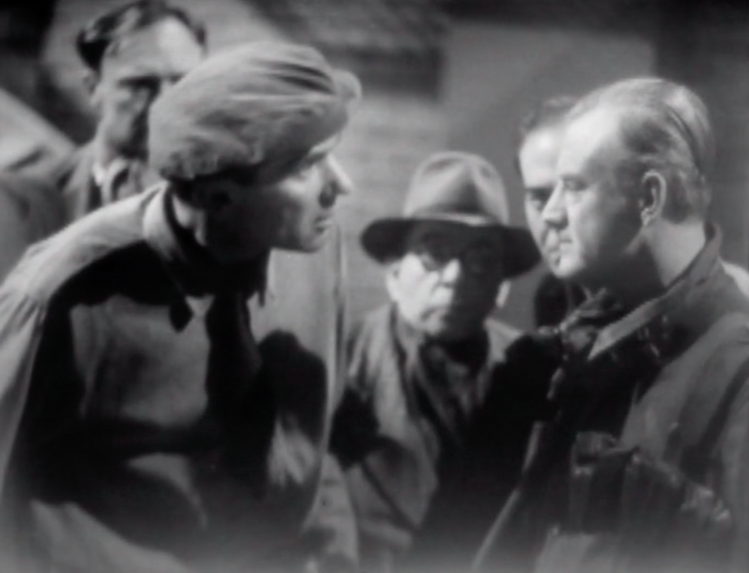
Apart from the sense of creeping paranoia, the most impressive thing about ‘Quatermass II’ is the section of the story that deals with what is essentially an armed worker’s revolution at the Winnerden Flats community. Rudolph Cartier is a ground-breaking director for British TV – almost redefining what the medium could be and those scenes are almost his ‘Battleship Potemkin’ (OK slight exaggeration) – shot on film at the oil refinery at Shell Haven. Val Guest would repeat these very impressively in the film ‘Quatermass 2’, but Cartier is achieving this on a BBC budget and schedule. Cartier is the man who almost more than anyone defined the grammar of British TV – he took a medium that had been treated as ‘radio with pictures’ and made visually distinctive, filmic pieces that moved the medium on from its live, in-studio beginnings. The leap from ‘The Quatermass Experiment‘ to ‘Quatermass II‘ is very apparent – much as it would be from here to ‘Quatermass and the Pit‘ (1958) – these serials chart the very development of British TV.
As Nigel Kneale got older, he, like many, became more conservative. A view that his son, the novelist Mathew Kneale, endorsed on a recent ‘Front Row’ podcast. However here, he almost seems to be to the left of Mac Hulke. Quatermass convinces the workers at the plant to rise up, as a series of events – a meteorite injuring one of their wives, an infected child and the actions of the ‘zombies’ start to mount up. This culminates in the infection of Delgado’s Hugh Conrad in front of them and the mass landing of the meteorites. They storm the plant and take up arms. Holed up in one of the pumping stations that controls gas flow to the huge pressure domes where Quatermass has seen the creatures growing – the voice of ‘management’ (actually Nigel Kneale himself) implores them to surrender. These scenes would be rather unrealistic scene today – the workers using machine guns on the guards as the take over. It is much less implausible in 1955 – when all of these men would have had military training and many fought in a war. Armed revolution in Eastern England probably seemed more plausible anyway in 1955.
As the workers take control of the pumping station to the pressure domes and start pumping in oxygen to poison the creatures, the ‘company’ try to fight back. Using the tried and tested method of ‘divide and conquer’ – familiar to anyone who grew up during the Miner’s Strike, convincing some of the ringleaders (almost acting as union reps) into talks. This leads to one of the most harrowing scenes that I can remember in British TV drama. The worker’s hear screaming echoing through the pipes and the pressure drops as the pipes feeding the dome are suddenly blocked by something, liquid dripping from them. Quatermass and the others realise that the bodies of some of the ringleaders of the uprising have been pulped and used to block the pipes leading to the pressure domes where the ammonid creatures are growing. They use human flesh as a ‘plug’. Now that is horrific, I mean really horrific, they are nice, reasonable people – the ones who want to negotiate with the ‘management’ and hear their views. They are killed and used like a raw material. I can’t think of any way that this can’t be construed as an attack on the way that workers and soldiers were treated in the Britain of the 1950’s – fodder for the bosses and test subjects for the military. It takes an armed revolt in this case for them to break their chains, only for their flesh to be used in an industrial process.
Past imperfect

The story, whilst frequently brilliant, isn’t entirely without its faults. John Robinson has replaced Reginald Tate from the original serial, who sadly died shortly before this was filmed. He came in relatively late in the day and has to carry a lot of the storytelling and technical dialogue. He isn’t bad, but he isn’t quite in the same league as Tate or his successor, the brilliant Andre Morrell. He is a much colder version the character, not the bawling mass of aggression of Brian Donlevy in the film version, just somewhat reserved and not especially likeable. This is still live TV, albeit with more filmed inserts than ‘The Quatermass Experiment’. ‘Quatermass II’ was recorded on transmission, unlike most of the original serial, but the majority of the performances are still live, unlike say early ‘Doctor Who’ – which was ‘as live’ – recorded, but little opportunity to cut or record scenes. Robinson suffers, rather like Hartnell at times with the highly technical and often complex dialogue has to carry.
Some of the other performances are also somewhat stilted – especially Monica Grey as Paula. Apparently, she was appointed against Rudolf Cartier’s wishes as she was the wife of someone important at the BBC. Again, as with ‘The Quatermass Experiment’, some of this is just different performance codes of the times – the especially heavy RP she employs for example and some of it can be put down to the live nature of these. These serials chart the very rapid changes in TV and the BBC in general between the first in 1953 and the last of the trilogy in 1959. The improvement in the production values of the serials is vast. We are missing some of the links between serials – Cartier and Kneale’s ‘The Creature’ for example, which features some of the earliest location filming. By the final serial ‘Quatermass and the Pit’, we are watching very well-made TV, with strong filmic direction and quality acting. We see that in embryonic form here.
The Destroyers – an epilogue too far.
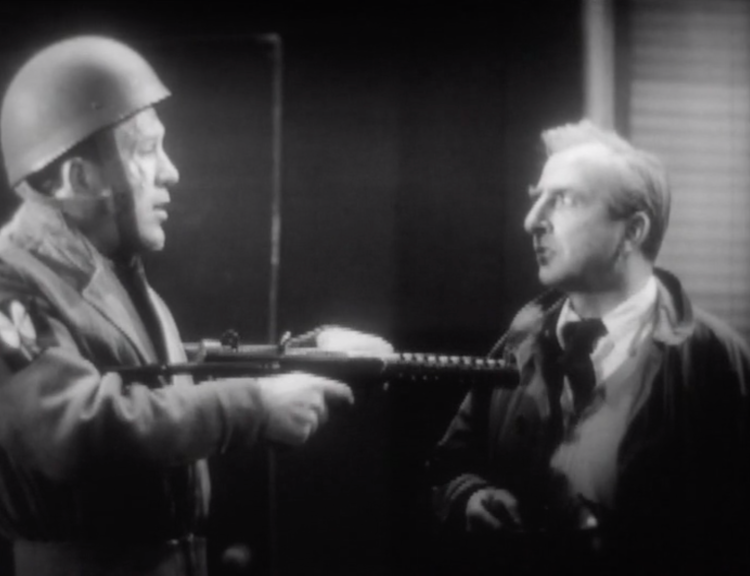
Like ‘Spearhead from Space’ – the ending is definitely the weakest aspect of this. Although for quite different reasons. With the events at Winnerden Flats wrapped up, following the uprising and destruction of the creatures in the tank. One of the workers leaders, enraged by the deaths of his friends and colleagues, fires a bazooka at the pressure dome, destroying it and the creatures with it and releasing the toxic gasses through the complex. In a typically bleak Kneale move, it seems that everyone dies except Quatermass who is wearing a protective guard suit and mask already.
The narrative now instead turns to the asteroid that the creatures have come from. And as it does it turns somewhat into the sort of hokey sci-fi that Kneale detested and had indeed parodied in the cinema scene in ‘The Quatermass Experiment’. Despite a pretty awful central performance from Brian Donlevy as Quatermass, the Hammer film version of ‘Quatermass II’, has a more successful ending – it finishes as Winnerden Flats as the plant and creatures are destroyed and the Quatermass II rocket is used as a missile (pre-figuring the final story) and destroys the asteroid.
In the TV version, Quatermass returns to the BRG to find it occupied by British paratroopers (this is the year before Suez), lead by the possessed Dillon. Again, something that ‘Spearhead from Space’ would use with the replica of Scobie leading British Army troops against UNIT at the plastics factory. Oddly, the troops allow Quatermass and Leo Pugh to pilot the Quatermass II rocket to the asteroid, which is hidden in Earth orbit. The plan is to set off the nuclear motor and destroy it. This is also part of the creatures plan though – they want to use the rocket capsule to speed their journey to Earth. Pugh is revealed to have been possessed by the creatures since Winnerden Flats and dies, floating off into space. Quatermass ignites the rockets nuclear motor and destroys the asteroid and the creatures there, whilst escaping in the capsule.

It is a rare misstep from Kneale and Cartier. They clearly cannot afford this section of the serial and the space suits look absolutely preposterous. The surface of the asteroid has clearly been made with a fraction of that spent on even, say Vortis, in early ‘Doctor Who’. It would have been a much better idea to simply fire the rocket, unmanned at the asteroid instead. In any case, Quatermass just feels wrong in space – he is the troubled, moral, scientist, fighting high concept alien menaces on Earth, not out on the surface of an asteroid in space. Oddly, as such the ending feels much more like ‘Doctor Who’ – something that I really don’t think that Nigel Kneale would thank me for saying.
If you can look past these flaws though, this is a brilliant piece of work. When it plays to its strengths – the sinister cold war paranoia, the mysterious industrial plant, the wartime regulations, the government conspiracy, the body-horror and possession, the creeping menace and moments of genuine horror – it is superlative and a pivotal work in terms of its influence.
There will be more ‘Quatermass’ and Nigel Kneale to come in these reviews. Their influence on classic ‘Doctor Who’ and lingering impact on the new series simply cannot be understated, as such they should be required viewing for anyone hoping to understand the development of the series, particularly in the 1970’s, but also as groundbreaking, intelligent, popular British TV and a cultural phenomena in their own right.